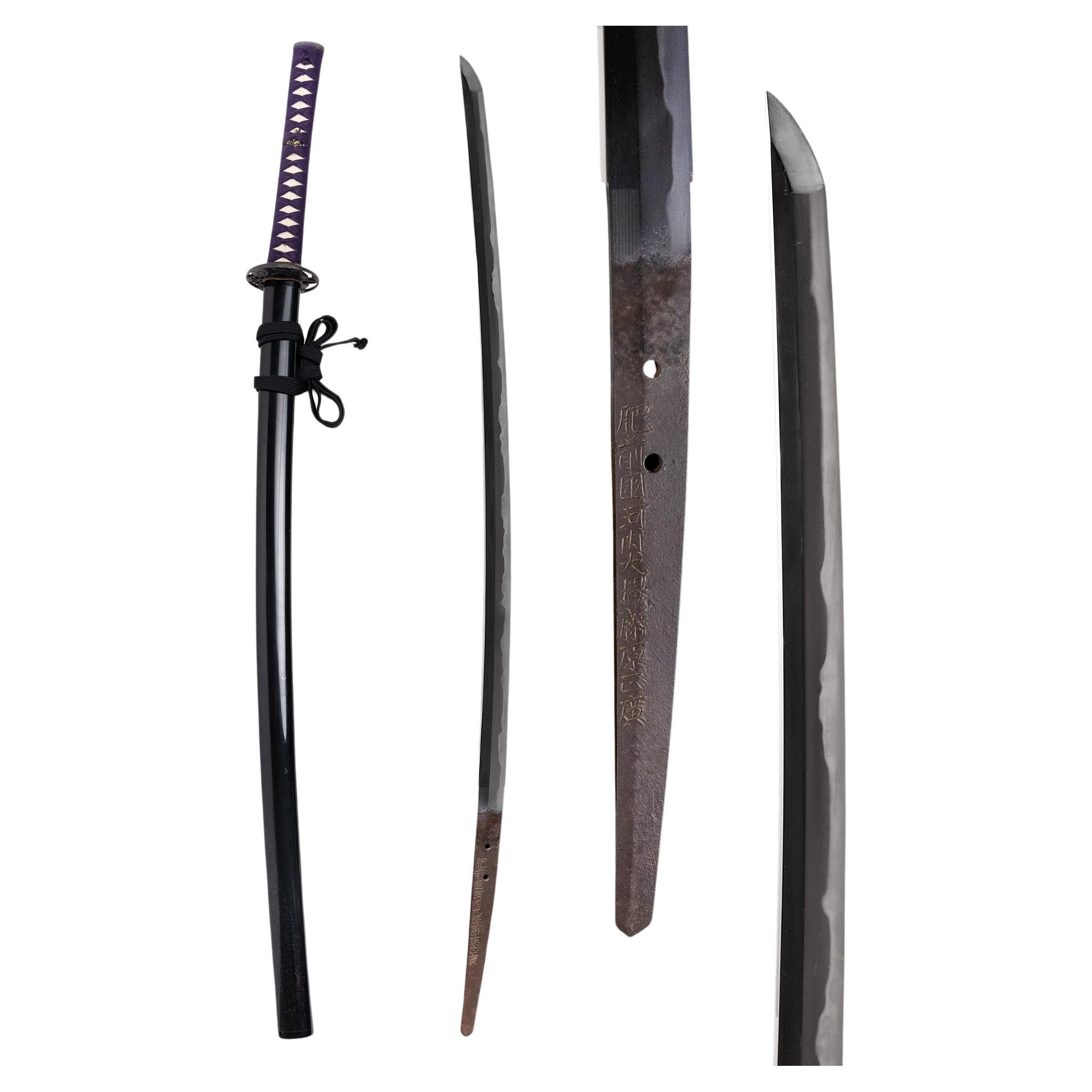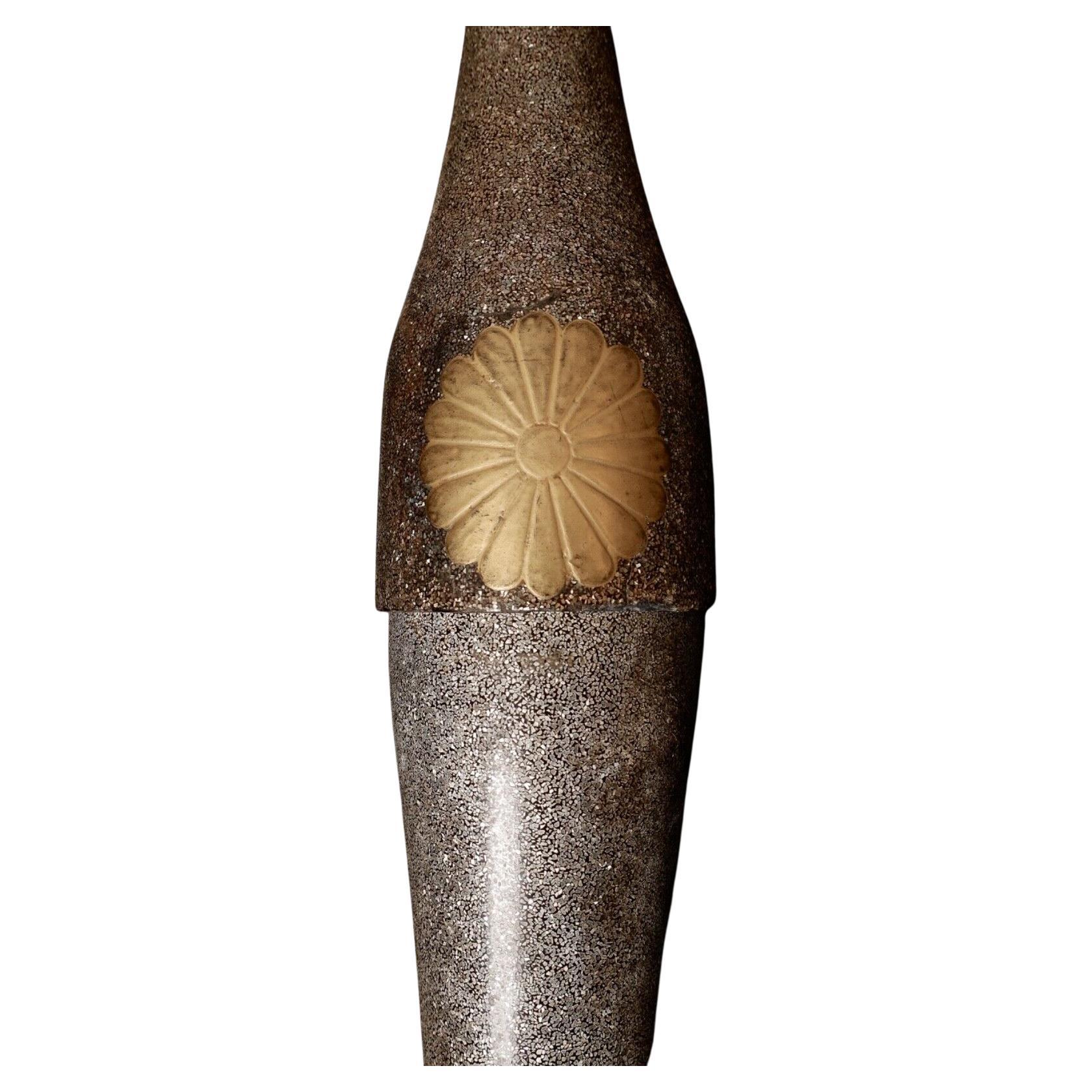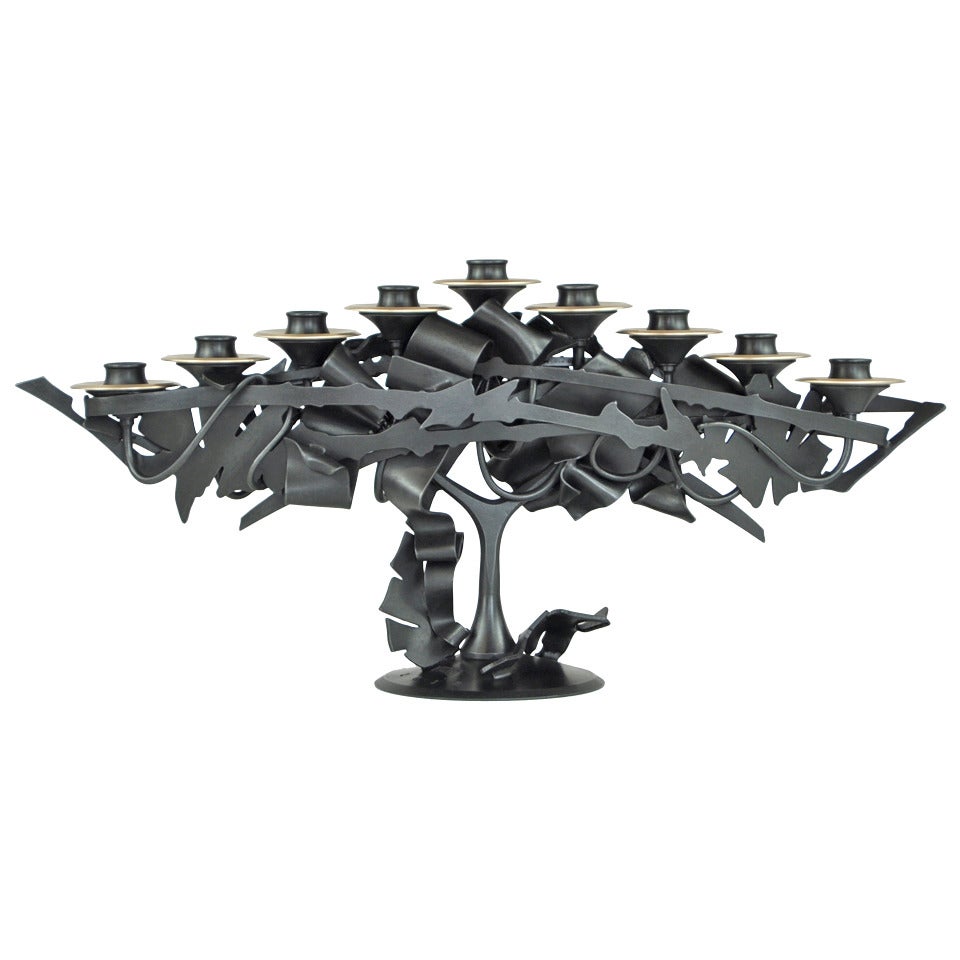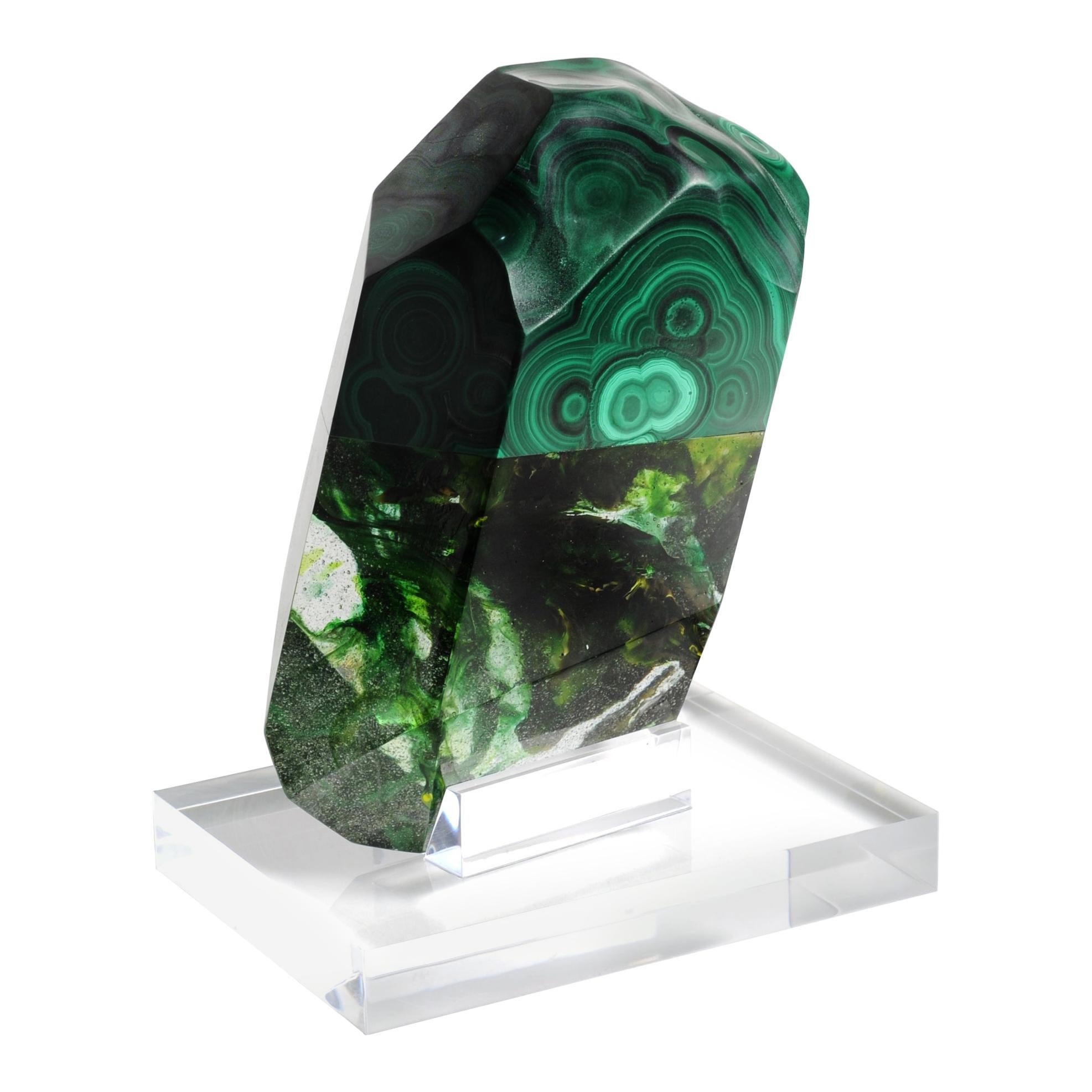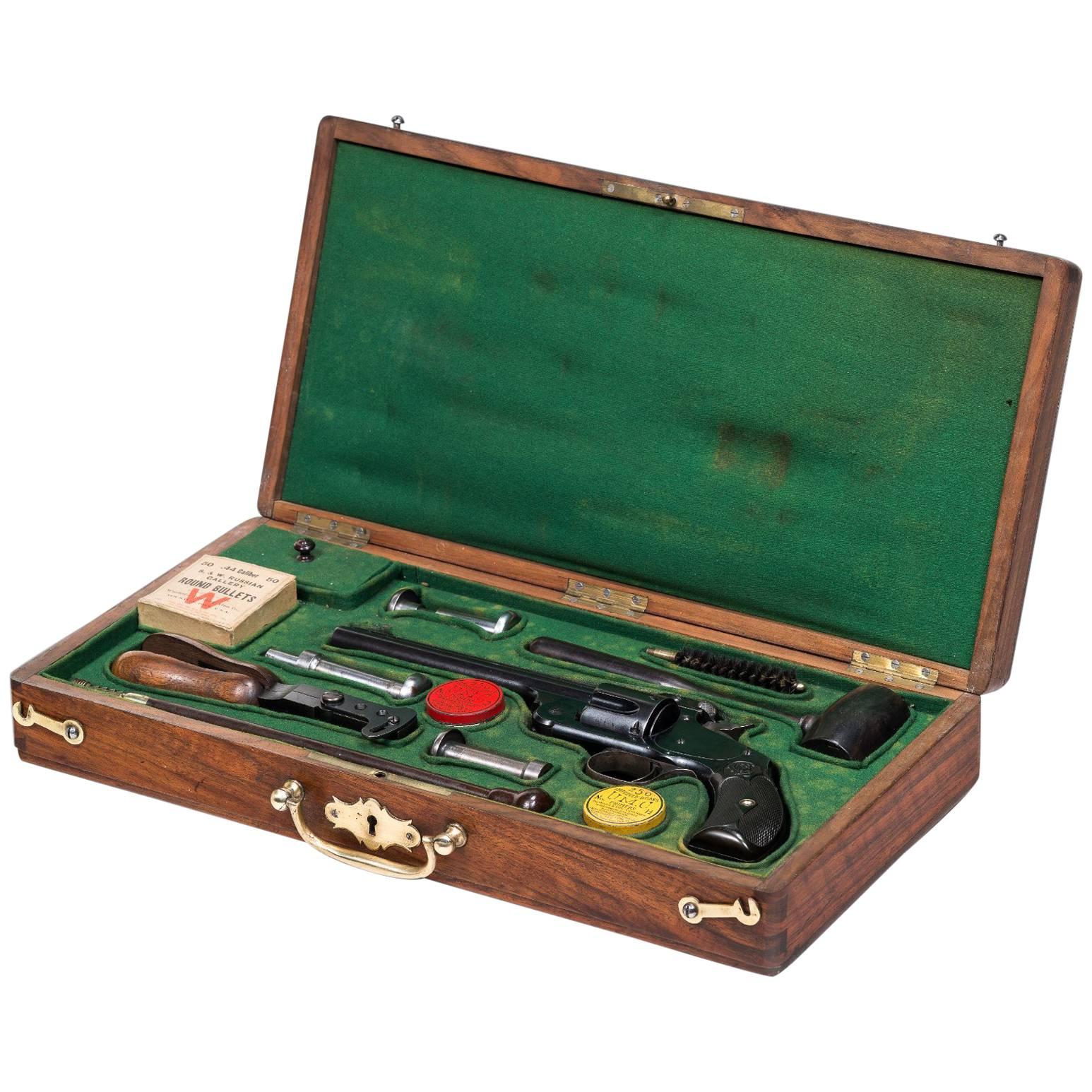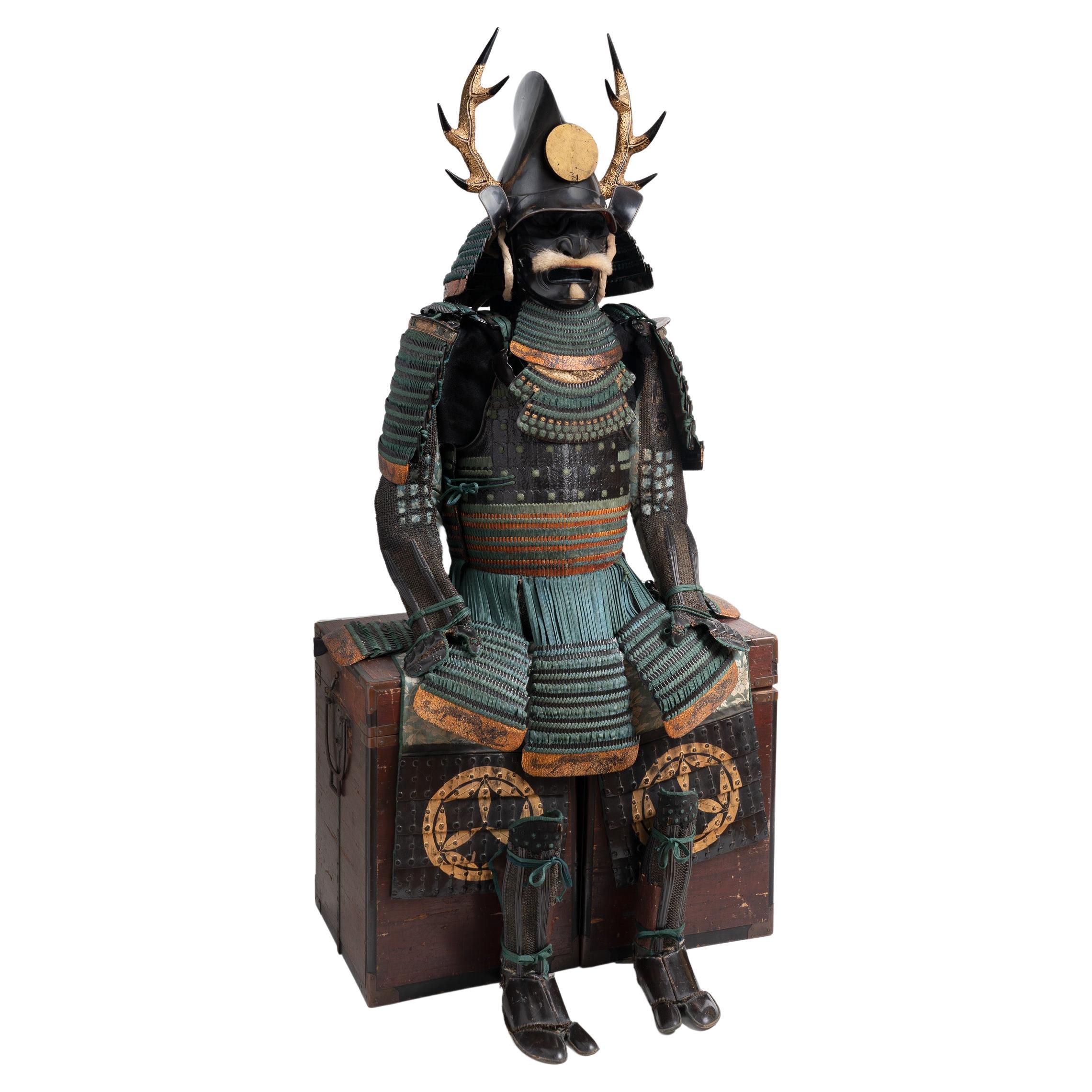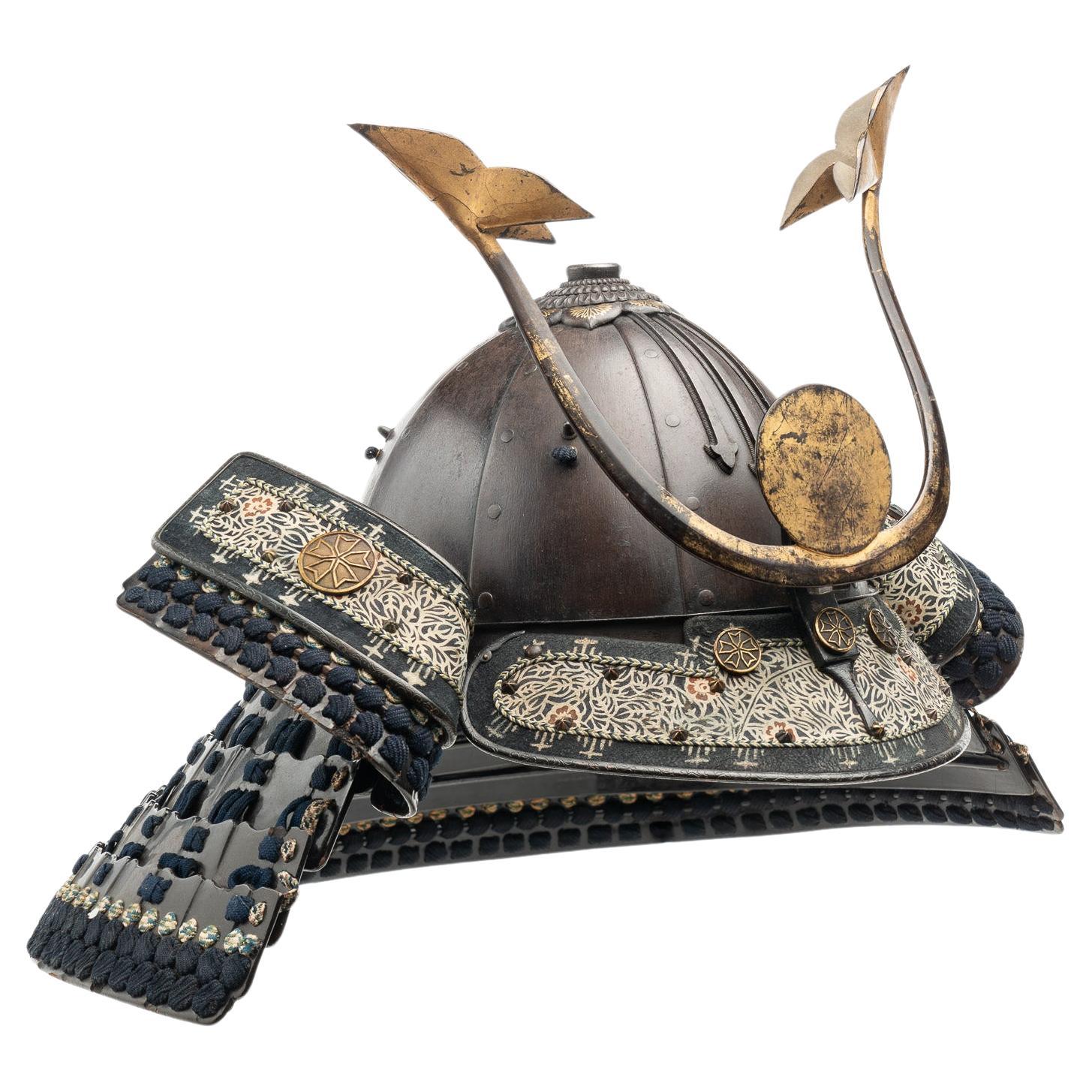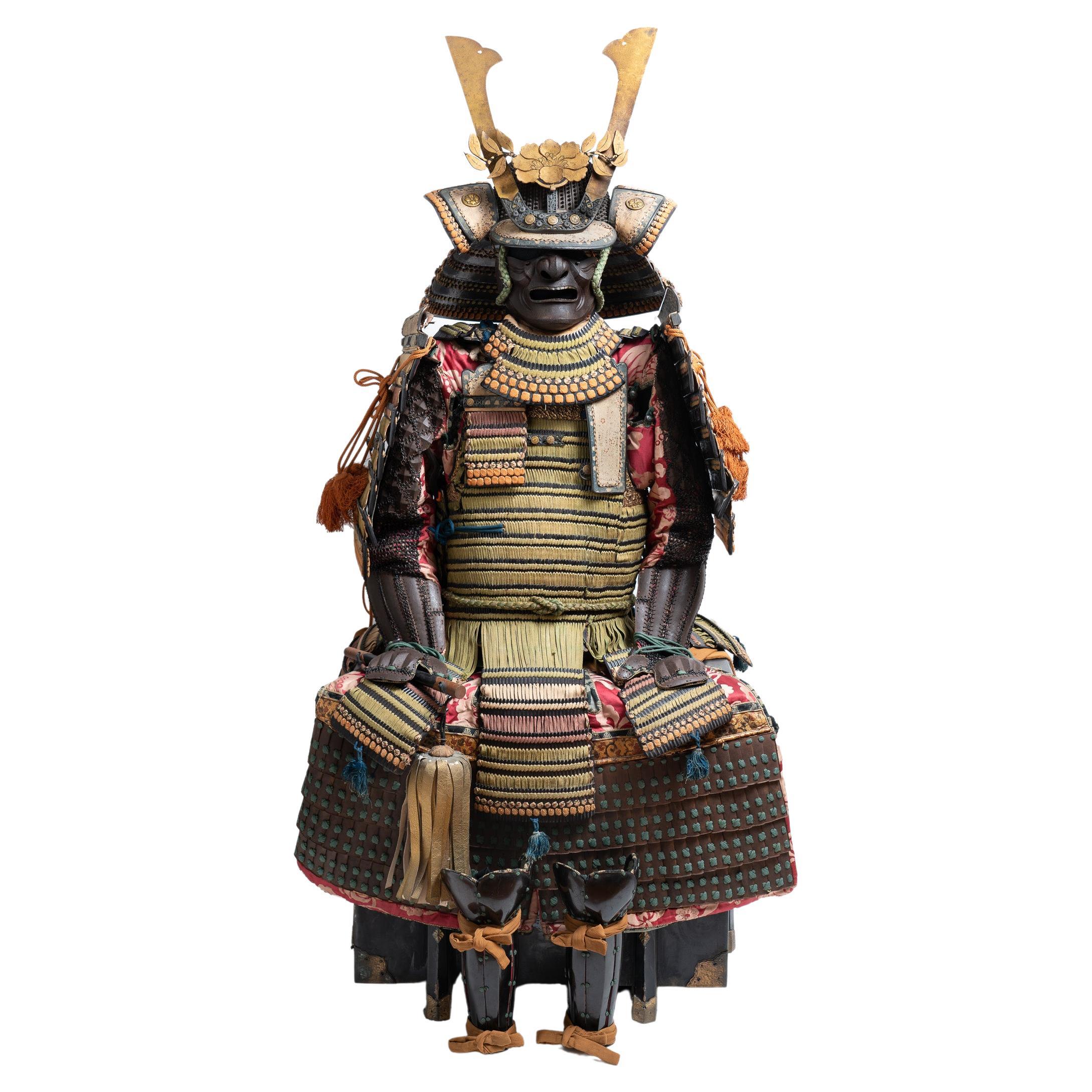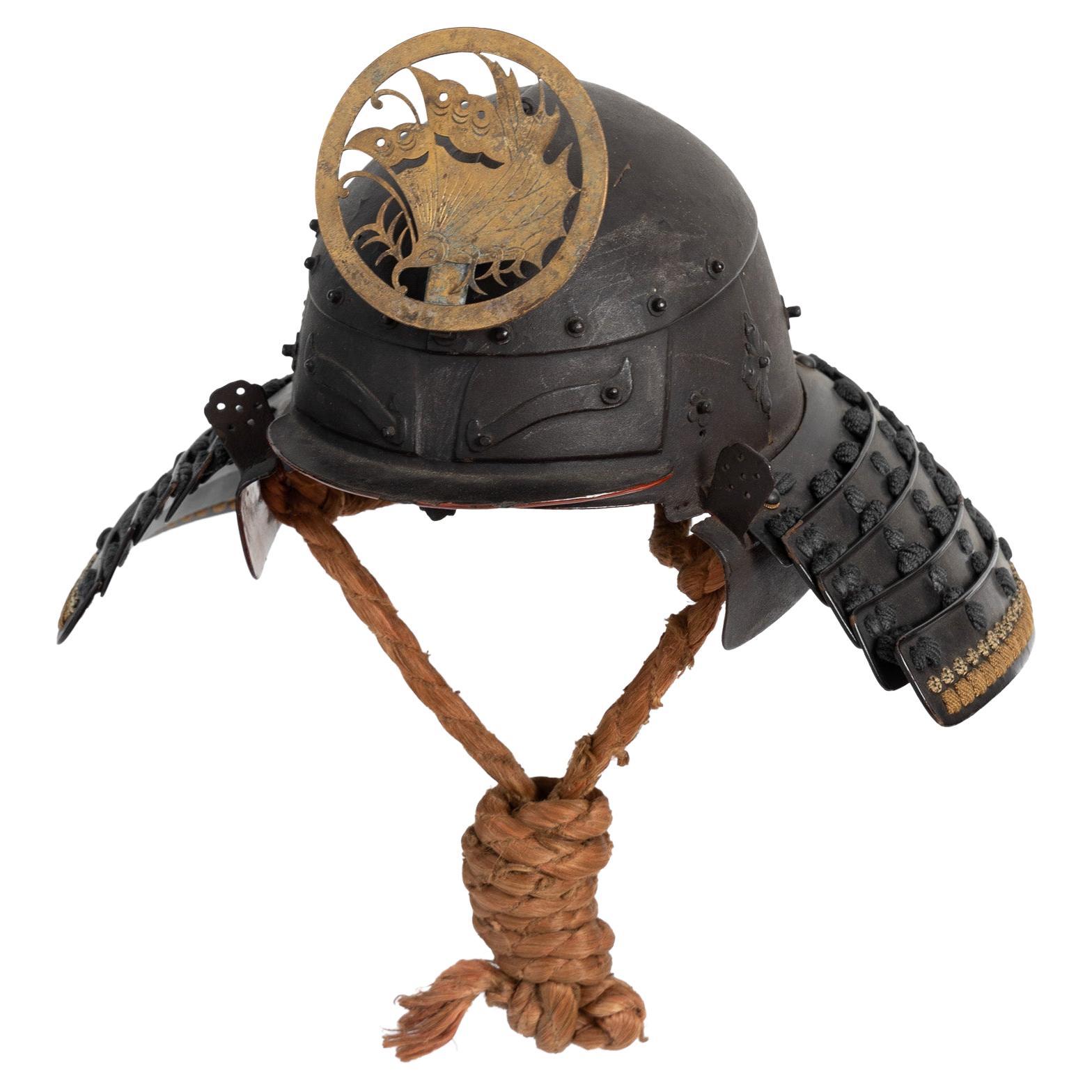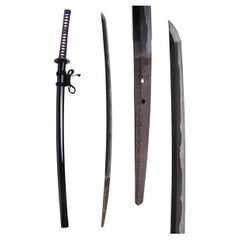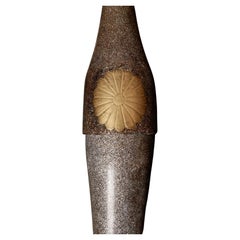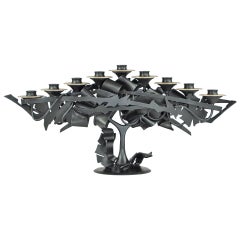
Hizen Katana
View Similar Items
Want more images or videos?
Request additional images or videos from the seller
1 of 6
Hizen Katana
About the Item
- Dimensions:Height: 28.04 in (71.2 cm)Width: 1.25 in (3.15 cm)Depth: 0.32 in (8 mm)
- Materials and Techniques:Iron,Tempered
- Place of Origin:
- Period:
- Date of Manufacture:1615-1867
- Condition:
- Seller Location:Milano, IT
- Reference Number:1stDibs: LU4250219791962
About the Seller
5.0
Recognized Seller
These prestigious sellers are industry leaders and represent the highest echelon for item quality and design.
Established in 2005
1stDibs seller since 2018
10 sales on 1stDibs
Typical response time: 1 hour
More From This SellerView All
- A Hizen Katana in koshiraeLocated in Milano, ITA Hizen Katana in koshirae Signed 肥前國河内大掾藤原正廣 Hizen kuni kawachi daijō Fujiwara Masahiro - Early Edo Period (1615-1867) - NBTHK Hozon Tōken - Nagasa [leng...Category
Antique 17th Century Japanese Arms, Armor and Weapons
MaterialsSteel
- Dangae do tosei gusoku A blue-laced samurai armor with cuirass of double styleLocated in Milano, ITDangae do tosei gusoku A blue-laced samurai armor with cuirass of double style Edo Period, 18th century Kabuto [helmet]: Black lacquered eboshi-nari kabuto, in the form of this ...Category
Antique 18th Century Arms, Armor and Weapons
MaterialsIron
- Go-Mai Uchidashi Dō Tosei Gusoku Samurai Armor Decorated with an Embossed RabbitLocated in Milano, ITGo-mai uchidashi do tosei gusoku Samurai armor decorated with an embossed rabbit Edo period, 19th century This samurai armor is complete and original, with consistent elements...Category
Antique 19th Century Japanese Metalwork
MaterialsIron
$37,981Free Shipping - Okitenugui Kabuto Samurai Helmet Shaped as a Head Towel Saika, Early Edo PeriodLocated in Milano, ITOkitenugui kabuto Samurai helmet shaped as a head towel Saika, early Edo period, 17th century The Haruta armorers who moved to Kii province in the early 17th century, took the name from the village where they worked, Saika, near Wakayama, possibly on request of the local daimyo, Asano Yukinaga, a great armour amateur. Specialised in the construction of plate helmets, they produced mainly two typologies of kabuto: one with six plates covered with a chrysanthemum-shaped plate on top and one shaped as a “head towel”, called okitenugui. The latter type of kabuto employs very heavy plates crafted in a curved manner and was improved in order to make it resistant to firearms. This okitenugui kabuto features some distinctive decorations of the Haruta school, including the application of cut-out iron elements, including eyebrows, washers and lozenge-shaped decorations on the sides. The ring on the top, however, is a rare feature and could be used to hold a small war flag.Category
Antique 17th Century Metalwork
MaterialsIron
- Hon-kozane ni-mai do tosei gusokuLocated in Milano, ITHon-kozane ni-mai do tosei gusoku Samurai armor in revival style Edo Period, 17th to 18th century Signature on kabuto: Jōshū jū Saotome Ietada Kabuto [helmet]: A russet iron (tetsu sabiji) sixty-two plate kabuto, each mounted with twenty-five small tapered standing rivets (ko-boshi) of decreasing size; the front plate, larger than the others, is fitted with two lines of rivets, while the rear one is left empty, for a total of 1.550 rivets. The typical "Saotome-byo", an extra rivet which is almost an additional signature of the Saotome armorers, is visible inside. Maedate [helmet crest]: Kuwagata (stylized horns) with shakudo kuwagata-dai (support) fitted with three hanabishi (flower-shaped family crest) and a large gilt-wood peony Menpō [mask]: A russet iron (tetsu sabiji) ressei-men (mask with fierce expression) Dō [cuirass]: Ni-mai dō (made in two parts) with hon-kozane (true scale) construction. Stencilled leather plates with engraved shakudo borders, fine pierced kanamono (application) bearing a hanabishi. Sode [shoulder guards]: Large type (ō-sode), with fine kanamono and decorations. Kote [sleeves]: In russet iron, with a hanabishi on the back of the hand (tekko). Haidate [thigh guard]: Of hakama type (full trousers), made of tied rectangular iron plates. Suneate [shin guards]: Finished in black urushi lacquer. Accessories: A saihai (commander’s baton); high-level kara-bitsu (storage box) With its large sode (shoulder guards) and old-fashioned construction, the style of the armor is reminiscent of the medieval suits...Category
Antique Late 17th Century Japanese Arms, Armor and Weapons
MaterialsIron
- Toppai kabuto, Signed Haruta Yoshimasa and dated 1802Located in Milano, ITToppai kabuto, Samurai helmet from the Kajiwara clan. Edo period, dated 1802. Signatures: 筑藩士官 梶原 景泰 命春田 昌芳造之 享和二年壬 秋也 Chikushū (?) Shikan (officer) Kajiwara Kageyasu (?) Mikoto (lo...Category
Antique Early 19th Century Japanese Arms, Armor and Weapons
MaterialsIron
You May Also Like
- 18th C Rare Samurai Katana Sword Storage Case.Located in Fukuoka, JPFine Samurai Katana Storage Container with Gilded Crest This fine Samurai Katana storage container is a stunning example of Japanese craftsmanship. It ...Category
Antique 18th Century Japanese Edo Arms, Armor and Weapons
MaterialsWood, Giltwood
- Albert Paley, Menorah, 2013By Albert PaleyLocated in Concord, MAAlbert Paley (born 1944) Menorah, 2013 Formed and fabricated blackened steel, brass Measures: 11 x 22 inches Signed, dated and numbered at base Edition of 18 (plus 2 artist’s pr...Category
21st Century and Contemporary American Modern Religious Items
MaterialsBrass, Steel
$10,500 - African Green Malachite and Organic Green Hues Glass Shape SculptureBy Orfeo Quagliata, Pietra GalleryLocated in Naucalpan, Edo de MexMeiosis, African malachite and glass sculpture from TYME collection, a collaboration by Orfeo Quagliata and Ernesto Durán. TYME collection a dance...Category
2010s Mexican Abstract Sculptures
MaterialsMalachite
- Smith & Wesson Revolver SetBy Smith & WatsonLocated in Paris, FRExceptional and complete original set of Smith & Wesson revolver model 44 Russian n.3. All pieces are original and in superb condition.Category
Antique 1880s North American Arms, Armor and Weapons
$20,765 / set - Oriental Saber, Late 18th CenturyLocated in Paris, FROriental Saber, also called Shamshir Ottoman Empire, late 18th century Handle in horn, silver mounted, damascus blade, scabbard garnished of black l...Category
Antique Late 18th Century Turkish Islamic Arms, Armor and Weapons
MaterialsMetal
- Real Toscana Sheep Truffle Fur Rabbit ToyBy JG SwitzerLocated in Sebastopol, CADesign commissioned by JG SWITZER from a Ukranian plush toy artist, and sewn in our workshop from fluffy fur scraps, LITTLE JG RABBIT is for Bigs AND Littles. Created from our re-purposed, real Toscana...Category
2010s American Arts and Crafts Children's Furniture
MaterialsFur
Recently Viewed
View AllMore Ways To Browse
17th Century Swords
Japanese Blade
Antique Japanese Blades
Katana Antique
Antique Katanas
Antique Katana
Japanese Katana
Japanese Katana Antique
Japanese Sword Katana
Katana Sword
Hizen Katana
Japanese Antique Shop
Japanese Antique Shops
Antique Japanese Storage Box
Qing Metal
Japanese Figurines
Figurines Japan
Japaneses Figurines
